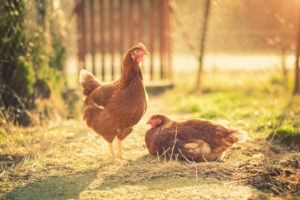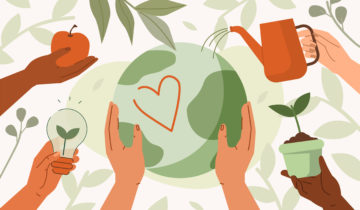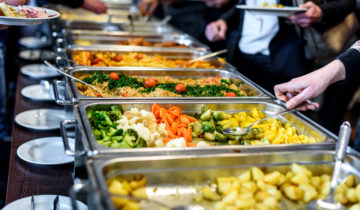Of the 115 billion or so eggs laid in Europe each year, 16 billion (14%) are laid in France, making it the leading egg farming country. France has the second highest proportion of organic eggs (17%), after Denmark.
Since the inclusion of codes on eggs produced for consumption beginning in 2004, households can easily see the conditions under which the products they purchase were farmed. Nowadays, more and more consumers also want to know the provenance of the ingredients used in what they are served outside the home.
What is a French organic egg?
Agence Bio and the INAO (National Institute of Origin and Quality) are the two public agencies that handle organic farming in France, with the help of many associations and federations. For eggs, there are two main aspects which define organic products: the chickens’ diet and living environment. As concerns diet, the criteria are fairly simple: the feed must be at least 95% organic and may not contain any GMOs, synthetic amino acids or growth factors. Wherever possible, the feed should be produced on the farm or, failing that, must come from the same administrative region. In other words, the local aspect is important for reducing the impact of transport on climate.
Specific farming conditions are also required for organic eggs. They concern not only the size of the buildings, their equipment and the outdoor space available to the chickens, but also the minimum floor space as a function of the number of hens:
- Each building may house no more than 3,000 chickens and may not exceed 6 hens/m2
- Equipment like nesting boxes and perches should encourage natural behaviours (for example, providing comfortable laying areas or the possibility of roosting at different heights)
- The outdoor range must include vegetation, feeders and drinking bowls and must offer at least 4 m2 of space per chicken (on a rotational basis).
In addition, many mutilation practices like debeaking are prohibited, and veterinary treatments using chemicals or antibiotics are limited to three per year.

Evolution of organic farming in France and Europe
The organic market is going strong in France. 55% of the French population regularly purchased organic products in 2015, increasing to 66% in 2018. This trend extends across all of Europe: spending on organic food rose by 7.2% in Germany in 2020 according to the BÖLW (German Association of Organic Farmers, Food Processors and Traders), and organic sales in the United Kingdom and Ireland increased by 6% between 2019 and 2020 (twice the growth reported by conventional products). Consumer awareness of what they are eating and how their food is produced continues to grow. Far from being a passing fad, this societal change should push all food service actors to begin their transition to more sustainable food which takes the environment and animal welfare into account.
Consumer adoption of organic food is getting stronger and stronger. Not only is it increasingly present in home cooking, but it is also expected of institutional catering and commercial restaurants. Professionals will have to keep up with this trend if they want to meet these expectations. Although organic options may not be available everywhere, there is high demand for cage-free and free-range eggs. This is mobilizing the entire sector. In 2020 in France, 45% of egg products were made from alternatively farmed eggs (cage-free, free-range or organic), breaking down as follows:
- Cage-free: 23.3% (up 6% from 2019)
- Free-range: 19.6% (up 4% from 2019)
- Organic: 2.4% (stable compared to 2019).
In other words, the proportion of egg products made with eggs laid by caged hens dropped 10% from 2019.
Cocotine is committed to ending all caged egg production and to developing a unique “animal welfare” style of cage-free chicken farming that combines affordability with animal welfare, giving restaurateurs a further tool for promoting their food.
Take a look at our infographic showing our assessment of alternative farming in Europe
What is the distribution of alternative and organic livestock in Europe? Find out in our infographic






